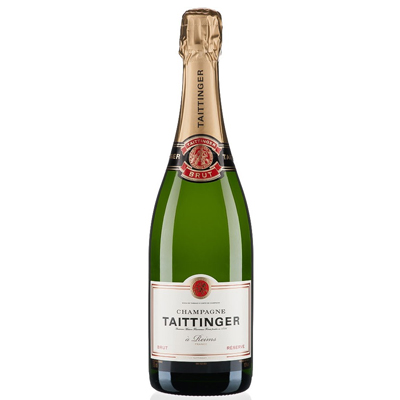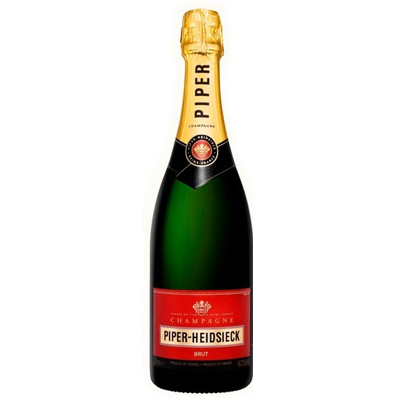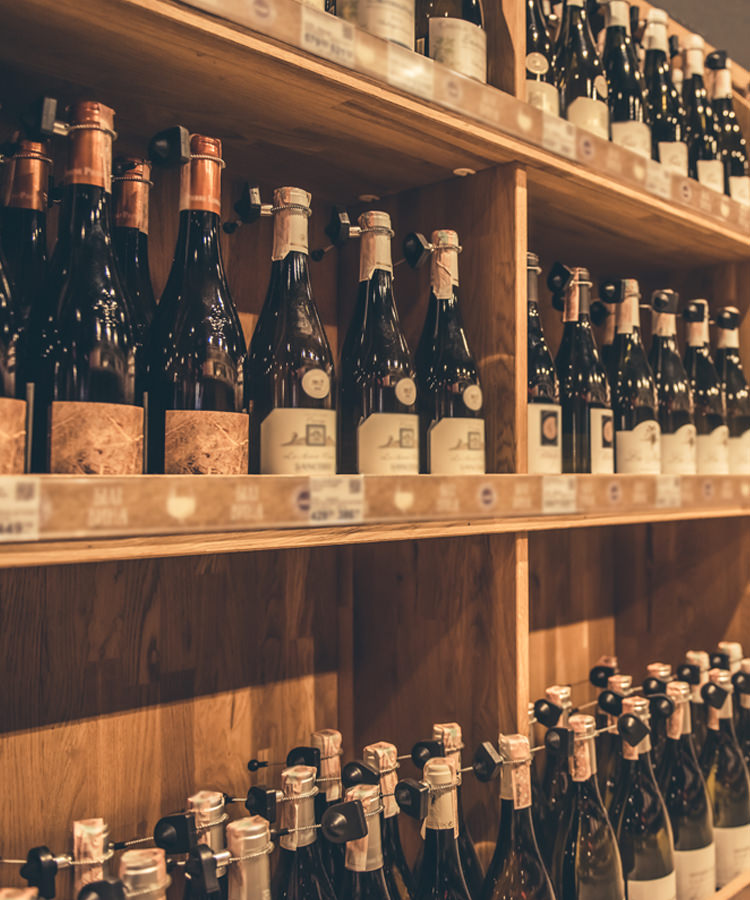
When it comes to sparkling wine, Champagne is king. There’s nothing more fun, festive, or straight-up fancy than a good old bottle of bubbly from the most renowned region of them all. Champagne’s terroir makes it extremely difficult to craft these precious bottles of bubbly, which also makes life as a winemaker in this glorious region less glamorous than it may seem. But some big houses have prevailed. We’ve gathered a list of the 10 bestselling Champagne brands in the world in 2015, according data collected by the Drinks Business. Grab a bottle for your next big celebration, promotion, or Saturday night.
1. Moët & Chandon
 With a whopping 30 million bottles sold annually, Moët & Chandon has become the unofficial flagship wine of LVMH. With updated winemaking facilities, larger amounts of reserve wines, lower dosage levels, and new cellar master Benoit Gouez on the team, the wine’s quality continues to improve. We don’t see this shifting from the No. 1 spot anytime soon.
With a whopping 30 million bottles sold annually, Moët & Chandon has become the unofficial flagship wine of LVMH. With updated winemaking facilities, larger amounts of reserve wines, lower dosage levels, and new cellar master Benoit Gouez on the team, the wine’s quality continues to improve. We don’t see this shifting from the No. 1 spot anytime soon.
2. Veuve Clicquot
 LVMH’s portfolio dominates the Champagne world, with their other Brut Champagne, Veuve Clicquot, occupying the second spot on the list. Veuve’s Yellow Label sells 19 million bottles per year and is comprised of 50 percent Pinot Noir, 30 percent Chardonnay, and 20 percent Pinot Meunier. Like Moët, the wine’s dosage levels have dropped, and this one spends 30 months aging on its lees.
LVMH’s portfolio dominates the Champagne world, with their other Brut Champagne, Veuve Clicquot, occupying the second spot on the list. Veuve’s Yellow Label sells 19 million bottles per year and is comprised of 50 percent Pinot Noir, 30 percent Chardonnay, and 20 percent Pinot Meunier. Like Moët, the wine’s dosage levels have dropped, and this one spends 30 months aging on its lees.
3. Nicolas Feuillatte
 Although third on the list, Nicolas Feuillatte is France’s No. 1- selling Champagne. With nearly 11 million bottles sold annually, the brand has grown significantly since its founding in 1976. It’s also one of our personal favorites.
Although third on the list, Nicolas Feuillatte is France’s No. 1- selling Champagne. With nearly 11 million bottles sold annually, the brand has grown significantly since its founding in 1976. It’s also one of our personal favorites.
4. G.H., Mumm
 This Pernod Ricard product, like those of LMVH, also has lowered dosage levels, focusing on terroir-driven quality in every bottle. Reserve wine levels have also shifted over the last few years, bringing more complexity to each bottle at hand. Ten new foudres have found their way to the winery, which will be used in the aging process to allow for more oxygen exchange.
This Pernod Ricard product, like those of LMVH, also has lowered dosage levels, focusing on terroir-driven quality in every bottle. Reserve wine levels have also shifted over the last few years, bringing more complexity to each bottle at hand. Ten new foudres have found their way to the winery, which will be used in the aging process to allow for more oxygen exchange.
5. Laurent-Perrier
 This Chardonnay-dominated (50 percent) assemblage ages for a whopping 43 months on the lees, allowing for toasty, bready flavors to dominate on the palate, yet remains light, fresh, and balanced. The brand has seen a significant increase in sales over the last decade, with a 10 percent jump from 2015 to 2016 alone.
This Chardonnay-dominated (50 percent) assemblage ages for a whopping 43 months on the lees, allowing for toasty, bready flavors to dominate on the palate, yet remains light, fresh, and balanced. The brand has seen a significant increase in sales over the last decade, with a 10 percent jump from 2015 to 2016 alone.
6. Taittinger
 As of 2006, Taittinger has returned to family hands and continues to sell over 5.5 million bottles per year. Like Laurent Perrier, Taittinger Brut NV also boasts a Chardonnay-dominant assemblage, clocking in at 40 percent. Whereas other estates have decided to lower dosage, Taittinger has recently released a new sweeter cuvée, geared to the late-night party crowds.
As of 2006, Taittinger has returned to family hands and continues to sell over 5.5 million bottles per year. Like Laurent Perrier, Taittinger Brut NV also boasts a Chardonnay-dominant assemblage, clocking in at 40 percent. Whereas other estates have decided to lower dosage, Taittinger has recently released a new sweeter cuvée, geared to the late-night party crowds.
7. Pommery
 With 259 hectares of vines and contracts with growers across the region, Pommery’s annual sales average just under 4.5 million bottles, with plans to focus more on the U.S., Japan, and Australia markets. The label has become extremely recognized, thanks to its bright blue packaging.
With 259 hectares of vines and contracts with growers across the region, Pommery’s annual sales average just under 4.5 million bottles, with plans to focus more on the U.S., Japan, and Australia markets. The label has become extremely recognized, thanks to its bright blue packaging.
8. Piper-Heidsieck
 Cellar master Regis Camus has been with Heidsieck since 1994, overseeing Heidsieck blends for nearly a quarter of a century. The Pinot Noir-dominant blend spends 27 to 30 months on lees, giving it a toasty, well-balanced mouthfeel. Another favorite of ours.
Cellar master Regis Camus has been with Heidsieck since 1994, overseeing Heidsieck blends for nearly a quarter of a century. The Pinot Noir-dominant blend spends 27 to 30 months on lees, giving it a toasty, well-balanced mouthfeel. Another favorite of ours.
9. Lanson
 Lanson’s Black Label Brut NV is by far the company’s bestselling cuvée, thanks to its clean, refreshing mouthfeel and potential for ageing. Purposeful avoidance of malolactic fermentation keeps the wine crisp, while lees aging for a minimum of three years adds textured complexity.
Lanson’s Black Label Brut NV is by far the company’s bestselling cuvée, thanks to its clean, refreshing mouthfeel and potential for ageing. Purposeful avoidance of malolactic fermentation keeps the wine crisp, while lees aging for a minimum of three years adds textured complexity.
10. Canard-Duchene
 Since being acquired by LVMH nearly 15 years ago, Canard-Duchene has seen only positive results, with over 4 million bottles sold annually. Crafted with 80 percent red grapes (Pinot Noir and Pinot Meunier), the wine has a fuller body and prominent structure. The winery has undergone serious renovations since 2011, seeking to maintain more environmentally friendly winemaking practices.
Since being acquired by LVMH nearly 15 years ago, Canard-Duchene has seen only positive results, with over 4 million bottles sold annually. Crafted with 80 percent red grapes (Pinot Noir and Pinot Meunier), the wine has a fuller body and prominent structure. The winery has undergone serious renovations since 2011, seeking to maintain more environmentally friendly winemaking practices.
